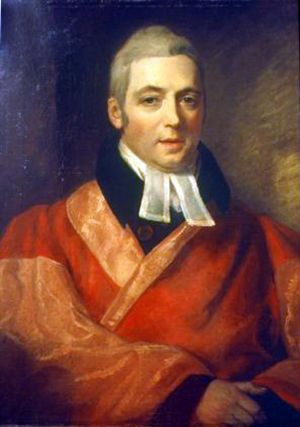William George Maton facts for kids
William George Maton was an English doctor who lived from 1774 to 1835. He became a well-known doctor, treating many important people, and even worked for the British royal family. Besides being a doctor, he was also very interested in nature and old historical topics, writing about them in books and papers.
Contents
Early Life and Education
William George Maton was born in Salisbury, England, on January 31, 1774. His father, George Maton, was a wine merchant. William went to Salisbury grammar school and then to The Queen's College, Oxford in 1790. While studying at Oxford, he became very interested in botany, which is the study of plants.
In 1794, Maton became a member of the Linnean Society, a famous group for people who study nature. He became good friends with Sir James Edward Smith, a well-known botanist. The society thought highly of Maton, even naming a woodpecker, a type of seashell, and a group of plants after him! He finished his studies at Oxford, earning his B.A. degree in 1794 and his M.A. degree in 1797.
Becoming a Doctor
Maton began his medical training at Westminster Hospital. He earned his M.B. (Bachelor of Medicine) degree from Oxford in 1798 and his M.D. (Doctor of Medicine) degree in 1801.
In 1802, he was chosen to be a fellow of the College of Physicians of London, which is a respected group for doctors. He worked as a doctor at Westminster Hospital from 1800 to 1808.
Doctor to the Royal Family
During the summer, Maton often worked in Weymouth, Dorset, a popular seaside town. One day, a royal assistant asked him to come see Queen Charlotte. The Queen wanted him to identify a plant that one of her daughters, who loved botany, had found. Maton knew it was a type of grass called Calamagrostis epigejos. This meeting helped him get to know the royal family.
In 1816, he became a special doctor for Queen Charlotte. Later, in 1820, he cared for the Duke of Kent during his final illness. After that, he became a doctor for the Duchess of Kent and her young daughter, Princess Victoria, who would later become Queen.
Maton's medical practice grew very busy, and he became one of the most successful doctors in London. He passed away on March 30, 1835, at his home in London.
His Writings and Discoveries
William George Maton was not just a doctor; he also loved to write about nature and history.
In 1797, he published a two-volume book called Observations relative chiefly to the Natural History, Picturesque Scenery, and Antiquities of the Western Counties of England. This book was about his travels through places like Dorset, Devon, Cornwall, and Somerset, where he explored nature, beautiful landscapes, and old historical sites. He made these trips with his friends Charles Hatchett and Thomas Rackett, who was also a botanist.
Maton also wrote many scientific papers for the Transactions of the Linnean Society. He published a paper about cinchona, a plant whose bark is used to make medicine. In this paper, he described how he found an important part of the plant's bark that was used in medicine. He also wrote about history, including an article about an old seal found in Salisbury for the Gentleman's Magazine in 1792. He contributed to the Salisbury Guide and John Hutchins's History of Dorset. He even wrote a paper about the famous ancient monument Stonehenge for Archæologia in 1794.


